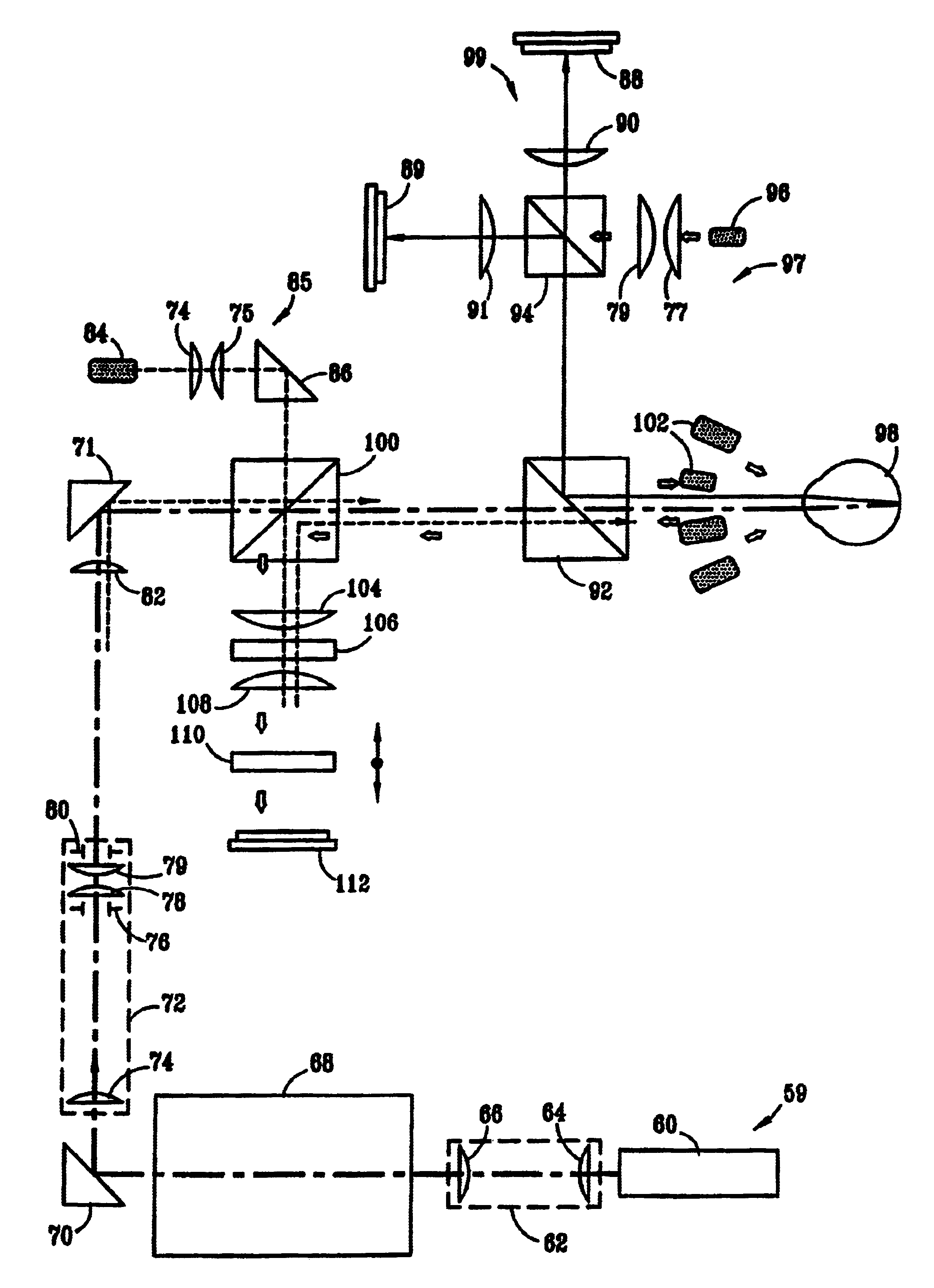Device for measuring aberration refraction of the eye
a technology of aberration and measuring devices, applied in the field of medical ophthalmological equipment, can solve the problems of increasing aberration measurement errors, low accuracy and productivity, and the fixed field of view of raster photoelectric analyzers of measuring devices with hartmann-shack sensors, so as to improve accuracy
- Summary
- Abstract
- Description
- Claims
- Application Information
AI Technical Summary
Benefits of technology
Problems solved by technology
Method used
Image
Examples
Embodiment Construction
[0037]While the making and using of various embodiments and methods of the present invention are discussed in detail below, it should be appreciated that the present invention provides many applicable inventive concepts, which may be employed in a variety of specific contexts. The specific embodiments discussed herein are merely illustrative of specific ways to make and use the invention and do not delimit the scope of the invention.
[0038]FIG. 1 schematically depicts the optical channels of one embodiment of the total aberration portion of the refractometer of the subject invention. A spatially defined parallel beam input channel 59 extends from a light source such as a laser or other low diffusion light source up to the eye of a patient 98. In one preferred embodiment a 650λ laser was employed. Along the spatially-defined parallel beam input channel is a cylindrical telescope 62 including two lenses 64 and 66. Light from the cylindrical telescope enters the deflector 68. The deflec...
PUM
 Login to View More
Login to View More Abstract
Description
Claims
Application Information
 Login to View More
Login to View More - R&D
- Intellectual Property
- Life Sciences
- Materials
- Tech Scout
- Unparalleled Data Quality
- Higher Quality Content
- 60% Fewer Hallucinations
Browse by: Latest US Patents, China's latest patents, Technical Efficacy Thesaurus, Application Domain, Technology Topic, Popular Technical Reports.
© 2025 PatSnap. All rights reserved.Legal|Privacy policy|Modern Slavery Act Transparency Statement|Sitemap|About US| Contact US: help@patsnap.com



